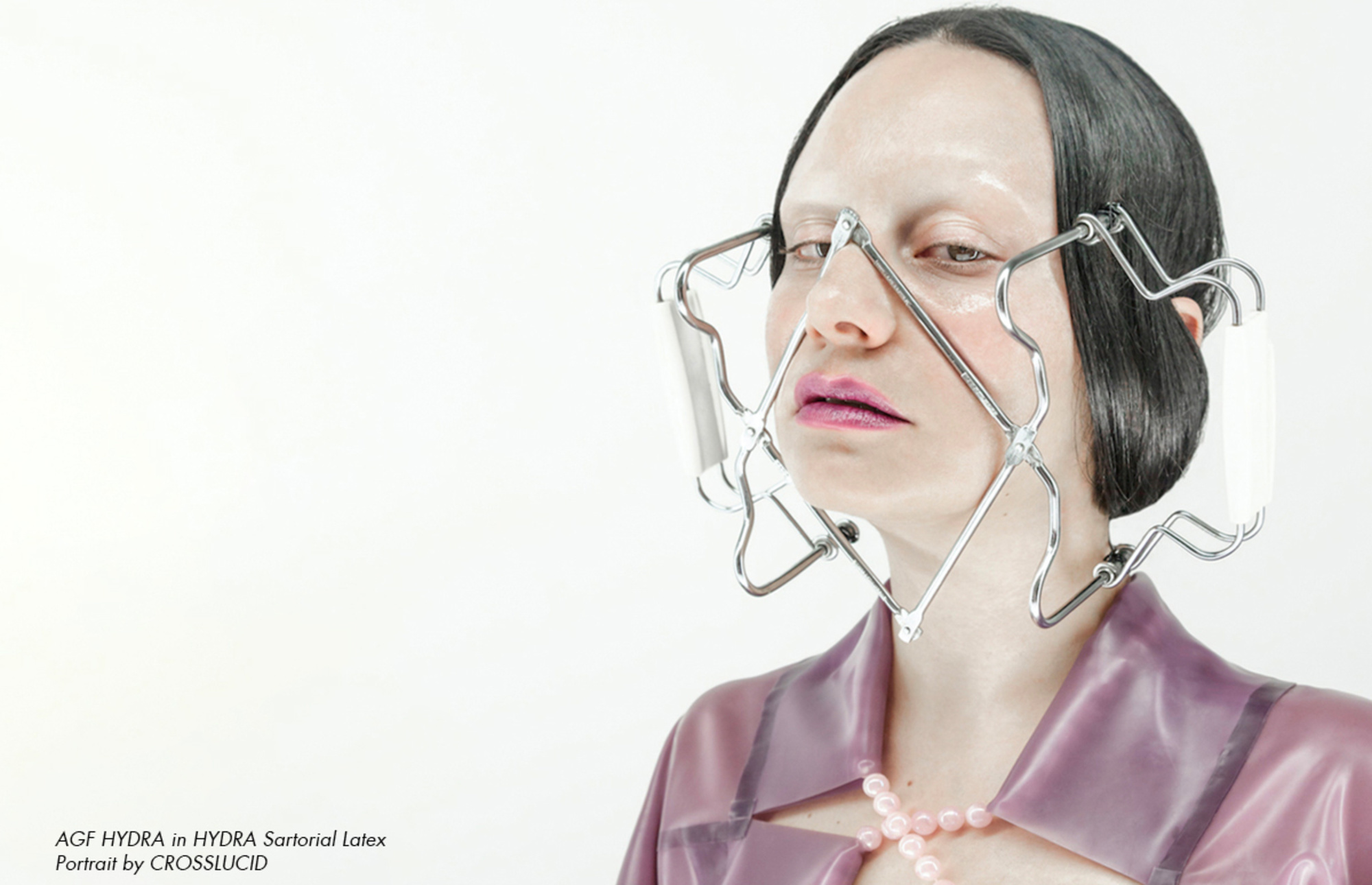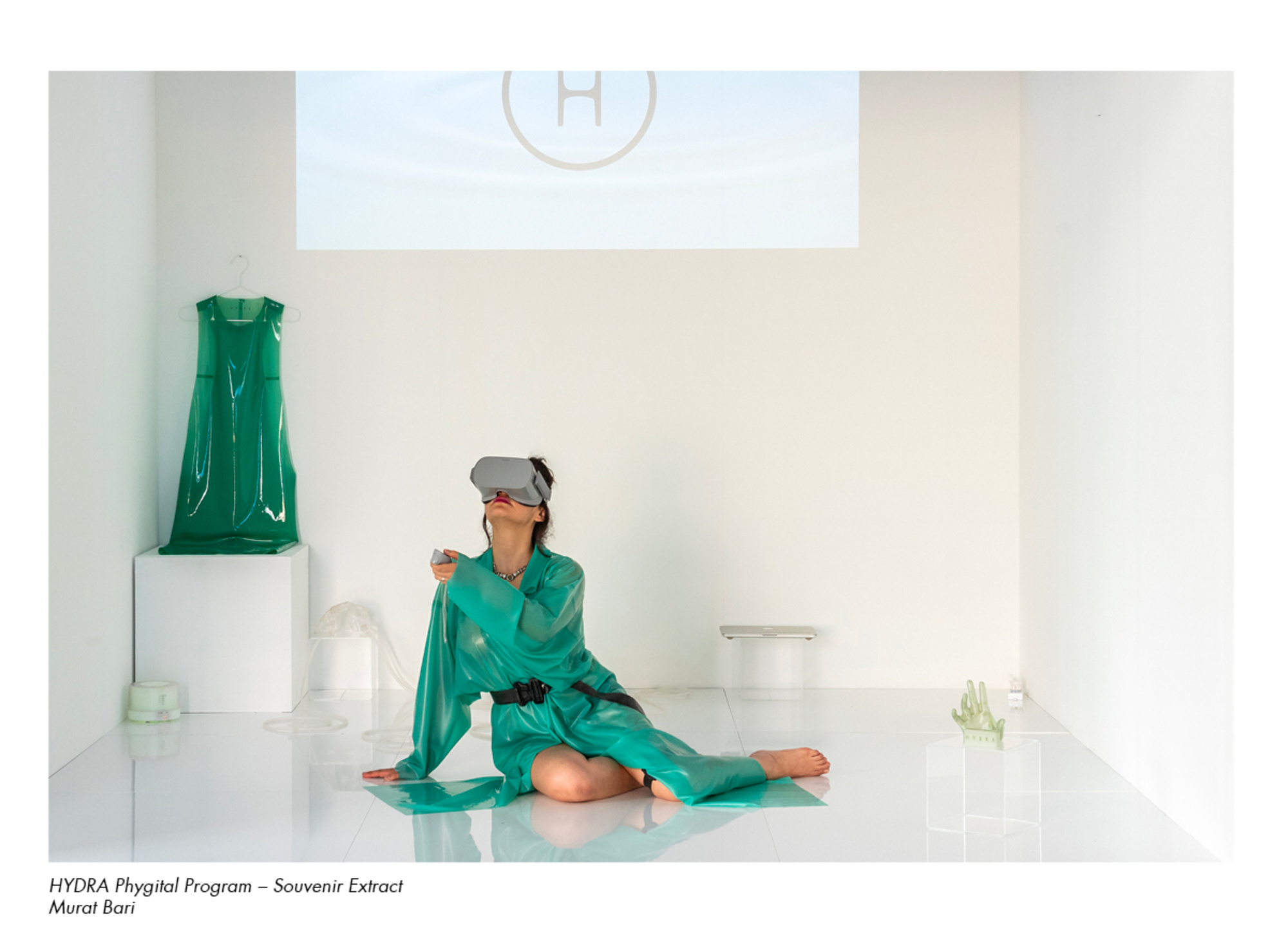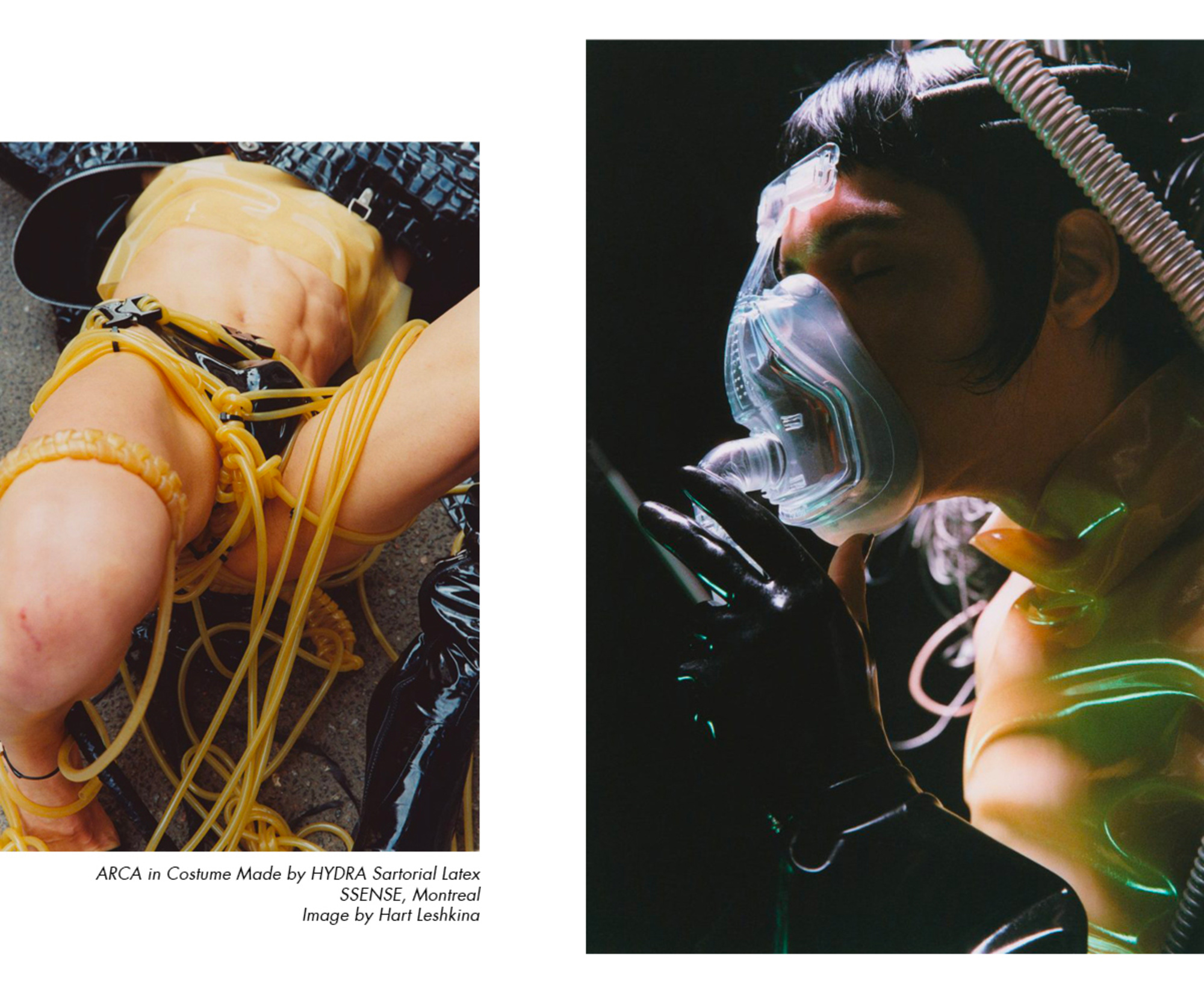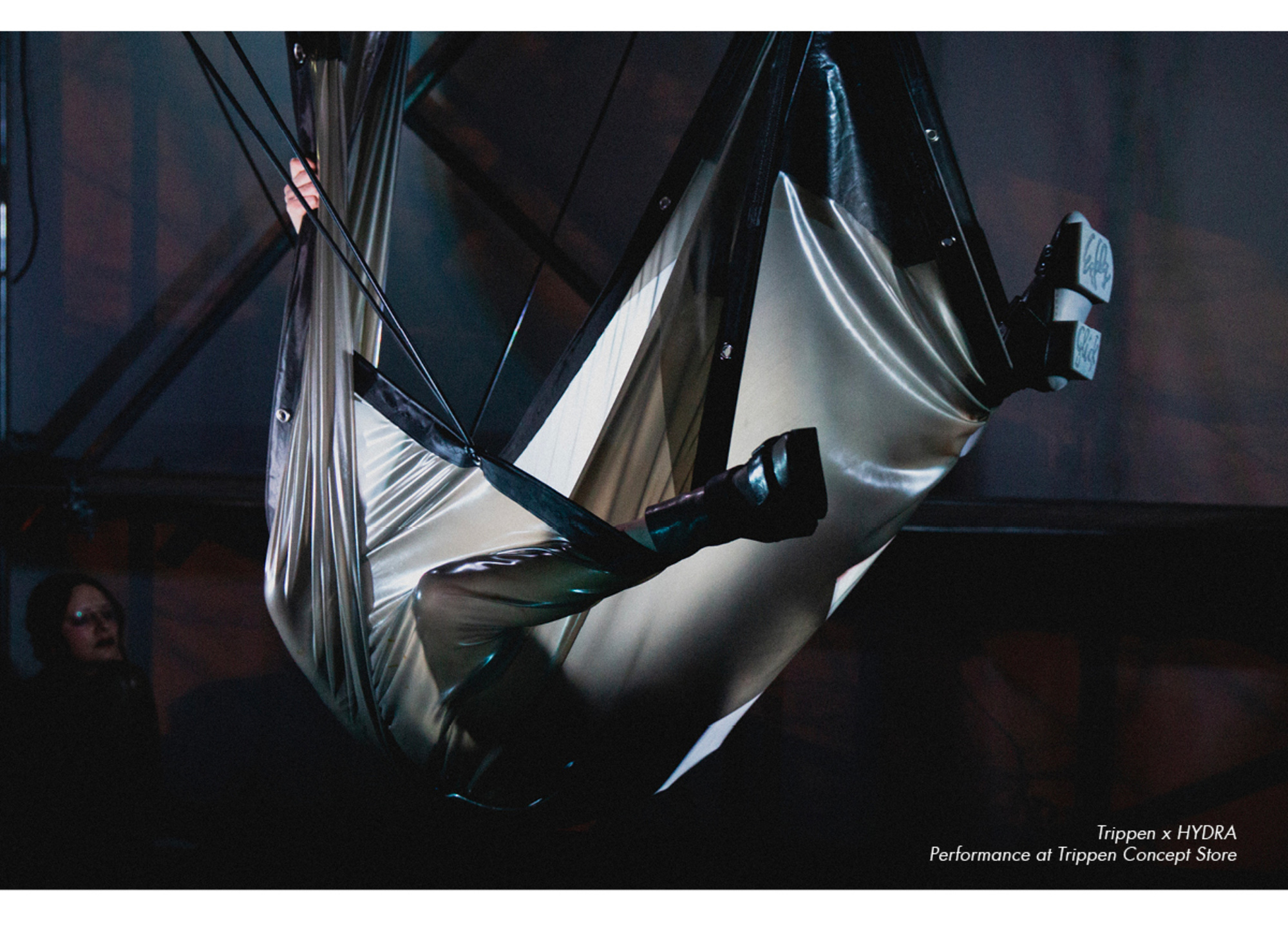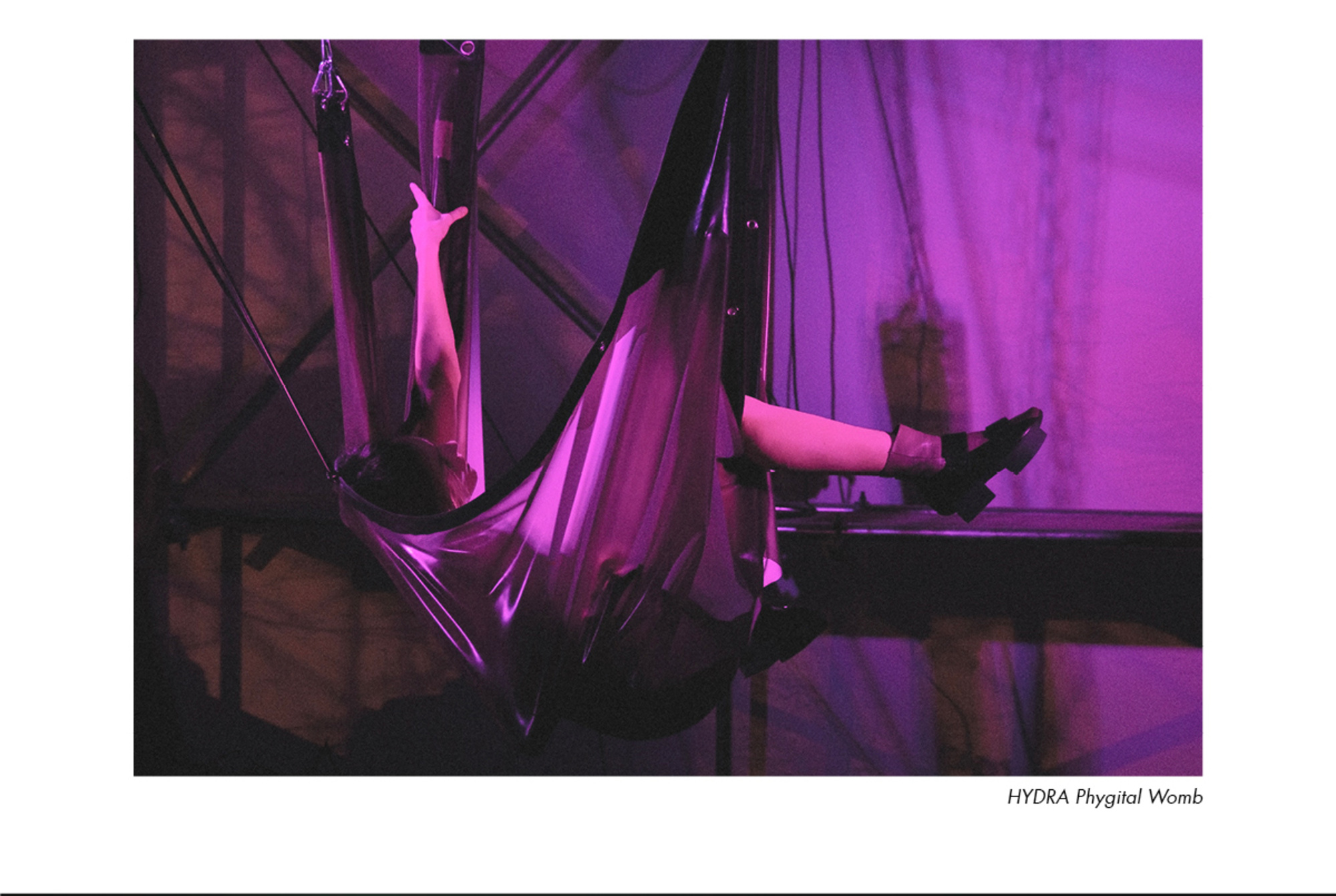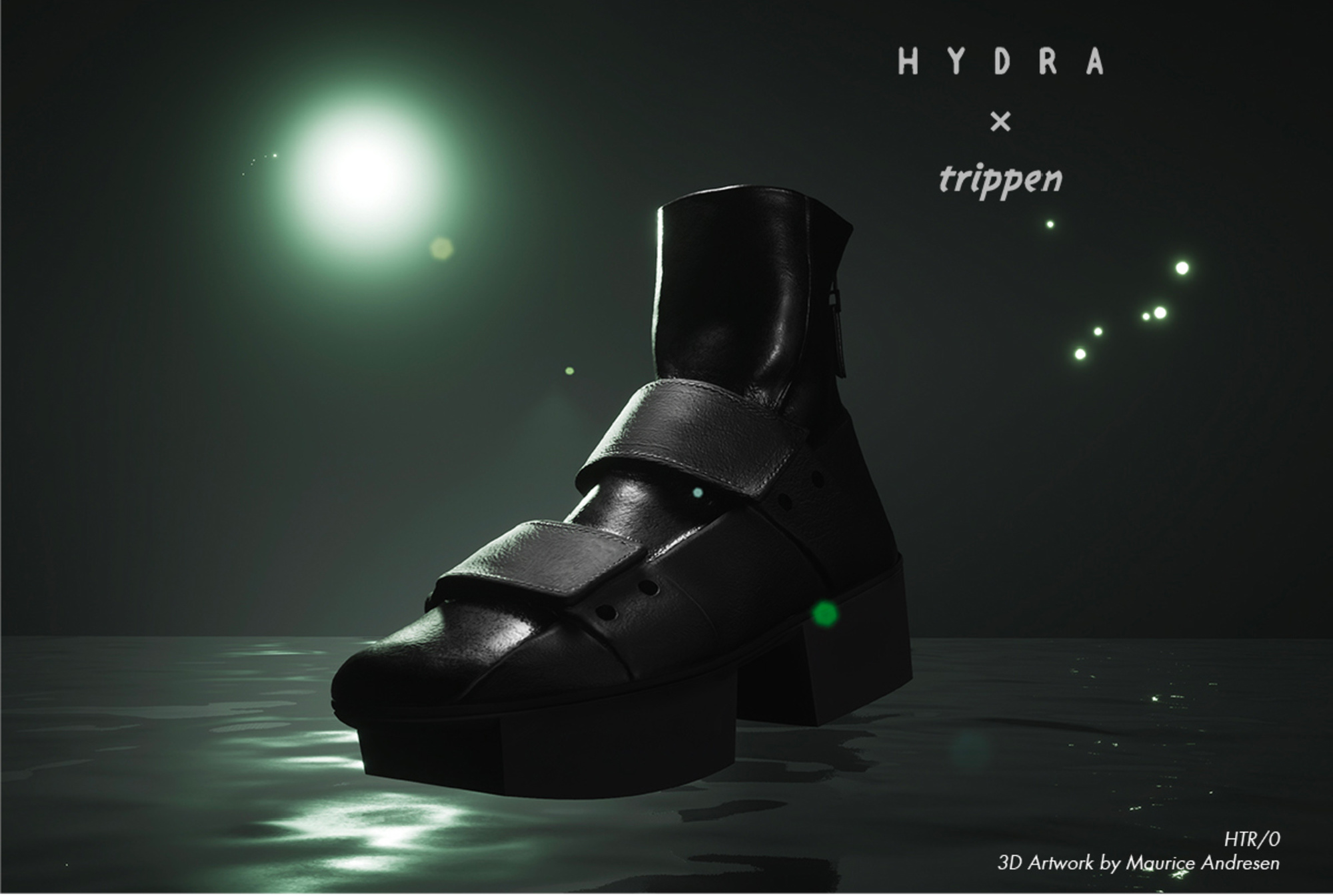Journal: Interview with Trippen's Collaborator HYDRA
I spoke with Anna Gloria Flores about her HYDRA project where we discussed some of her main values such as environmental responsibility, the connection between art and fashion and most importantly the collaboration between HYDRA x Trippen.
What was your journey before you began HYDRA?
In retrospect, all the work and life experience I’ve gained has led me to where I am now. I began experimenting with my body and style when I was living in a small town with little diversity. It was what helped me feel more authentic whilst being a rhythmic gymnastics athlete at the time. Still, I didn’t have the luxury to explore who I was: there was no social media, youtube or even google. So, back then being a teenager really meant being trapped in the social context you were in. This isolation was what actually brought me to fashion school in Milan when I was 17.
What happened during or after you had moved to Milan?
After studying fashion design and theory in Milan, I realized there was a fairly large discrepancy between what I was looking for and how the fashion business actually functioned. I was looking for freedom and authenticity. Meanwhile, the nature of the industry itself and the ethical choices that were being made only pushed people into consuming more. Most people involved seemed to have forgotten why they went into it in the first place. It was just the perfect expression of the worst side of our society. It’s not a coincidence the fashion business has been considered such a dangerous threat to our environment let alone for worker’s rights and conditions.
Nevertheless, I went on to train as a couture tailoring assistant in the London Alexander McQueen Studio, as well as being an Art Director assistant for a magazine in Milan. I then became a Creative Director for the pop culture icon BOY LONDON for their 2010 relaunch and a Co-Founder of an experimental brand AVA Catherside till 2015, when HYDRA began. This was followed by even more opportunities to work with other artists such as Björk, Arca. On paper, it may appear these jobs were different but deep inside I was aware of what I was looking for in terms of not only the business but my craft.
"I realized there was a fairly large discrepancy between what I was looking for and how the fashion business actually functioned. I was looking for freedom and authenticity. Meanwhile, the nature of the industry itself and the ethical choices that were being made only pushed people into consuming more."
So how did HYDRA emerge?
For all my life, I struggled with body image, depression and anxiety. In the past few years, I gradually came to the realization that this was related to a need to create a reality that didn't exist, whilst being forced to live in one I didn't agree with. Then, everything I went through manifested in HYDRA, it not only became my form of personal healing but also unveiled the universal nature of these struggles I encountered. The more I shared the more relatable it became. This led me to seek a way to release the tension between how we interact with ourselves and one another to begin establishing trust.
How have you tried to achieve this?
I try to create a safe space of unspoken communication through a more intuitive way of relating to physical reality. For example, the HYDRA latex used can somehow make you more conscious of your own skin whilst becoming another version of yourself. The initial garments of the HYDRA uniform naturally became a physical counterpart to my theoretical research. The uniform is really more about the feeling of wearing it rather than how it looks. For example, how the material sinks into the body shape or the changes in body temperature.
_"I was looking for something organic and alien-like to create this possibility of being yourself and something else simultaneously."_
** Could you also describe the visual intentions you had for HYDRA?**
I was looking for something organic and alien-like to create this possibility of being yourself and something else simultaneously. Hence, I went for a translucent colour palette, including black, siege and pink. My intention was for the uniform to look and feel like an organic membrane.
**You’ve also started to use VR, how has this served your work?**
Once the garments were made it then evolved into a performative practice involving healing techniques, meditative practices, and rituals. I wanted this personal project to become more inclusive. Thus, the HYDRA Phygital Program developed: merging the potentials of physical and digital experience together. The way we see these two realities in relation can sometimes feel alienating one way or another. This could be attached to societal fears of the future for instance where the current digital age has taken us. I wanted to challenge these narratives and the relationship we have with technology. Phygital invites people to experience a digital landscape through a headset whilst experiencing the physical reality I myself guide them through by healing massage, breathing exercises, alpha and gamma waves inputs and body tracking techniques. I also started working a lot more with the digital world so I didn't have to rely on physical resources so much.
**Why was it you didn’t want to rely on physical resources so much?**
We are progressively heading towards the loss of biodiversity and currently facing the sixth mass extinction on this planet, and what is causing it is human activity. In other words, we are killing ourselves. It’s important to remember we are a relatively young species and know nothing about evolution or how to efficiently survive on this planet. I strongly relate to the work of a scientist and author named Stefano Mancuso, whose study of plant neurobiology explores signalling and communication at all levels of biological organization: from genetics to molecules, cells and ecological communities. Plants are alternative living organisms with dynamic forms of awareness. Research has also explored how they communicate, or ‘signal’ with each other by using a complex internal analysis system to find nutrients, spread their species and defend themselves against predators. The data accumulated has transformed our view of plants from simple organisms to complex ecological structures and communities that can gather, process and share information. It’s worth noting that humans only make up to 0.01% of life on the planet. Whereas plants, make up approximately 90% and have the most efficient evolutionary system for survival. In our western culture, we have been trained to think everything needs to be fast produced and consumed in order to be effective, according to our capitalist attitude and should be taking a note from plants. I think through technology we could not only understand how more efficient systems function but also modify our societal structure accordingly.
_"We are progressively heading towards the loss of biodiversity and even human extinction. In other words, we are not killing the planet but killing ourselves. It’s important to remember we are a relatively young species and know nothing about evolution or how to efficiently survive on this planet."_
**Could you share an example with us on how plants function in an intelligent way?**
Well, plants are not organized in a hierarchical way. Every part of the plant functions independently, separation doesn't mean weakness but sprouting. This was also a characteristic of the mythological creature Hydra, which was created to protect the underworld from humans and impossible to kill because for each head that was chopped off another two heads would sprout. I tried to structure HYDRA in a similar way, for instance using VR to create an ecosystem that can be self regenerated. I also have a lot of collaborators and the interaction between us is the most important part of the project.
** Do you think these collaborators have shaped HYDRA in any way?**
Yes, definitely and vice versa. I am continuously being shaped by the people around me in a way that is osmotic and fluid. So, of course, HYDRA has also evolved thanks to its transpersonal nature. In terms of interaction with the audience, I like exploring the relationship between pleasure, desire, and consumption. I feel very responsible for my creations and what can be consumed as an object or content. The shoes were an interesting addition to the HYDRA uniform. Naturally, everyone was expecting this to happen eventually. Hence, it was an amazing opportunity to collaborate with Trippen, who've followed a very similar path to mine in terms of ideology.
** Could you elaborate on this idea a bit more?**
Well, ethics doesn't just mean something that sounds appealing like vegan leather or plant-based latex shoes. At least this is something I came to appreciate even more when I spent more time in the Trippen Studio. A lot of ecological conversations in fashion are debating brands, which are making so-called ‘ethical choices’ in order for people to feel comfortable consuming more products. With this being said, it’s amazing to be witnessing others besides myself creating products simultaneously fulfilling our needs for comfort, durability, and beauty, which is something Trippen is definitely doing. HYDRA was also very much founded on these values of sustainability, craftsmanship, and longevity. It appeared to be a perfect match from the beginning and a great opportunity to join our like-minded audiences.
**Could you share with us some of the processes you went through during your collaboration with Trippen?**
I began by thinking which shoe shape is most relatable for me besides exploring the question: “what does it mean to have a physical or mental condition compromising the expected average level of functionality imposed by our society and physical reality”. So yeah, I decided to make a prosthetic shoe and I was very lucky since Claudia already had the technical knowledge. In a way, the process behind the shoe was similar to the HYDRA uniform: It was a very meditative process or what I refer to as meditative labor. In practice, it involved sketching the shoes, for instance, the fitting characteristics. That is, exploring how we could shape them ergonomically around the foot like a sock whilst creating an outside shell for protection. We then tried replicating the practicalities e.g. the height that would be needed to protect the ankles or the straps to hold it together.
**Have you found your experiences collaborating with different artists and designers affected your perception of the relationship between art and fashion?**
Ideally, we shouldn’t be categorizing art or fashion. For example, art shouldn't belong exclusively to artists. We are all capable of having a creative mindset in the way we exist. Meanwhile, I think fashion needs to end actually or we should at least be reducing it to the essentials. I’m not suggesting the repression of individuality or freedom but rather taking a break from producing more things to wear. For instance, I wear a uniform to reduce my consumption and I don't want to be wasting my time thinking about it too much. I'm interested in creating garments that spark a dialogue about consumption and desire. Similar to Trippen, I also seek beauty in purpose. By making the industry more transparent and the consumer more informed, we can focus on the most urgent and important challenges in our path for personal and collective growth.
_"Ideally, we shouldn’t be categorizing art or fashion. For example, art shouldn't belong exclusively to artists. We are all capable of having a creative mindset in the way we exist."_
**So how do you see the future of fashion unfolding?**
I almost imagine this post-apocalyptic eco-goth renaissance with us emerging from the smoke of ashes. Nowadays, there are labs dedicated exclusively to the improvement of eco-friendly alternatives for unsustainable yet durable materials. It’s also important to remind one another reality is not static, we created it and thus can shape it. Especially, when we move our egos to the side and submit ourselves towards a better future for humankind. After all, it’s just common sense, we all want to prevent suffering and survive. Chris Vrettos, a political activist, said something like optimism is a political statement. Thus, we have no choice but being positive in the current climate. I support this sense of plurality and curiosity which the statement brings.
_Interview: Jakub Kubica_

